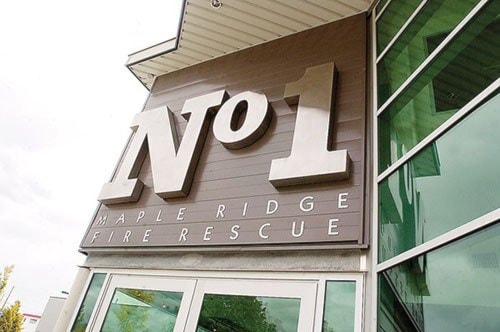In the offices of Fire Hall No. 1, the nerve centre for emergency operations in Maple Ridge, awkward looking white shelves hang over the windows in the new $8-million building.
They look like they could be used to store stuff, but they’re too fragile for that.
Instead, their real purpose is to capture daylight and disperse it on to the ceilings and floors. The light again is picked up by translucent office wall panels and is further distributed into the hallway.
As a result, assistant fire chief Michael Van Dop rarely has to turn on his office lights.
It’s one of the tricks the building uses that allowed it to earn a gold in the Leadership in Energy and Environmental Design awards.
LEED is a U.S.-based energy-rating system that measures construction processes and building materials to encourage energy conservation.
It took four years for Maple Ridge to earn its gold certificate because the building performance must be monitored in order to prove it’s saving energy.
“It takes time,” explained Laura Benson, sustainability manager with the District of Maple Ridge.
“That’s kind of what LEED is all about, the design, the building – so it’s all that stuff.”
Some of the other features of the building that make it sip energy are automated light switches that turn lights on and off when motion is detected.
To keep the building from soaking up heat in the summer, it has a white roof to reflect back sunshine. Geo thermal heating is also used, in which coolant is pumped into the ground then recirculated back into the building for uniform temperatures during both winter and summer. Thick insulation achieves a 35-per-cent savings in heating.
Even the fire hall’s location, on bus routes in the civic centre, earned the fire hall points, while storage for cycles achieved the same goal.
Low-flow toilets, auto tap sensors reduce water use by 20 per cent, and drought tolerant native plants outside means there’s no need to water outside.
The hall was built upon an expansion of an older building, allowing reuse of many materials, while 15 per cent of the materials come from local sources.
Benson said with the old building, energy consumption (electricity and natural gas combined) was 2.1 units per square metre of building space. After the renovation, it’s now 1.1 – a 46 per cent reduction.
